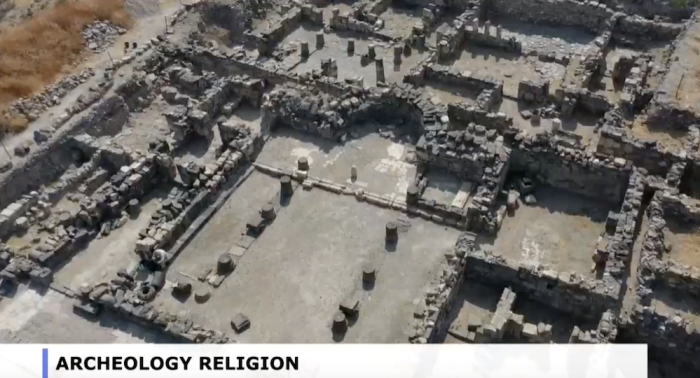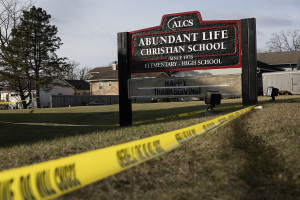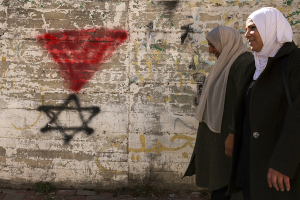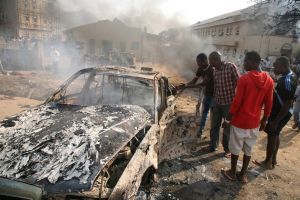Archaeologists discover mosaic revealing possible new location of Jesus’ miracle, feeding the 5000

Israeli archaeologists have discovered a mosaic illustrating the miracle of Jesus feeding the 5,000, located on the floor of a church on the opposite side of the Sea of Galilee from where it has been said the miracle originally took place.
The findings were discovered in Hippos near the Sea of Galilee at the Byzantine ‘“Burnt Church” site, according to University of Haifa archaeologists.
The “Burnt Church” in Hippos is believed to have been one of at least seven Christian churches burned down during the Sasanian conquest of the city in 614 AD, nearly 1,400 years ago. It appears the ash from the fire served as a shield to protect the mosaic which preserved its bright colors and design. One of the designs depict the feeding of the 5,000, mentioned in all four gospels.
“Taking the five loaves and the two fish, he … blessed and broke the loaves … and he divided the two fish among them all. And all ate and were filled … Those who had eaten the loaves numbered five thousand men,” Mark 6:41-44 reads.
Tabgha, Capernaum is an area on the northwestern shore of the Sea of Galilee where it’s traditionally accepted that the miracle took place.
Archaeologists have been studying the “Burnt Church” site since 1993 within Hippos National Park and this new discovery might suggest that the miracle took place closer to this new location.
Excavations of the site were overseen by Dr. Michael Eisenberg, on behalf of the Institute of Archaeology at the University of Haifa. In an interview published by The Jerusalem Post, Eisenberg said the finding does not confirm anything as of yet but appears to be portraying the miracle talked about in the gospels.
“Nowadays, we tend to regard the Church of the Multiplication in Tabgha on the northwest of the Sea of Galilee as the location of the miracle, but with careful reading of the New Testament, it is evident that it might have taken place north of Hippos within the city’s region,” he said.
“The fish themselves have a number of additional symbolical meaning in the Christian world,” Eisenberg continued. “There can certainly be different explanations to the descriptions of loaves and fish in the mosaic, but you cannot ignore the similarity to the description in the New Testament.”
Also found on the site, which was managed by Jessica Rentz, was another mosaic featuring 12 baskets, some bearing bread and some fruit. Eisenberg recalled that after Jesus fed the thousands, enough bread was left over to fill 12 baskets.
“Taking the five loaves and the two fish ... he gave them to the disciples, and the disciples gave them to the people. They all ate and were satisfied, and the disciples picked up twelve basketfuls of broken pieces that were left over,” Matthew 14:16-20 states.
Further excavation of the church uncovered designs of a peacock and fish, as well as a pair of lion-shaped door knockers in bronze casting.
According to Haaretz.com, the mosaic will be preserved and is being documented in multiple ways, including drone photography. A 3D model of the church will eventually be made to help archaeologists iron out additional details they might have missed in their excavations.





























